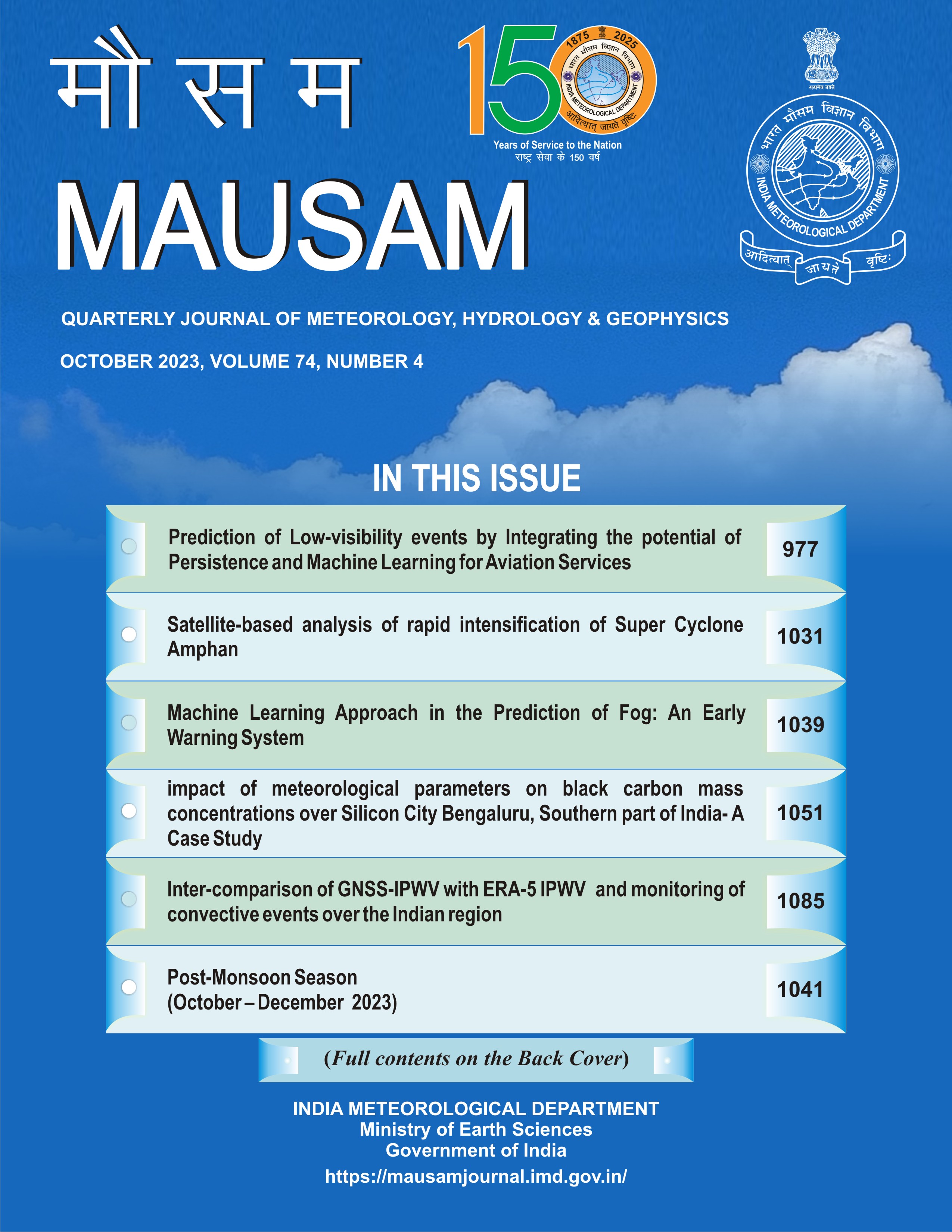Spatio -temporal variability in fire events due to crop residue burning and their impact on atmospheric variables using ground and remote sensing data in Punjab
DOI:
https://doi.org/10.54302/mausam.v75i4.6276Abstract
We attempted monitoring and mapping of the active fire events in Punjab, during the wheat and rice
harvesting period of 2017-2021 from the Visible Infrared Imaging Radiometer Suite (VIIRS) at 375 m aboard. The
analysis showed that the highest fire counts were observed in the central region, followed by the south-west and the
lowest in the north-east region of Punjab during all the years. Moreover, during the wheat season, highest fire counts
were observed in 2019, being 2535, 11062 and 6212 in north-east, central and south-west regions, respectively. However,
during rice, highest fire counts were observed in 2020 in the north-east being 2857 and in 2021 the central and south-west regions being 40960 and 30351 respectively. In line with the number of fire counts, the highest concentration of gases and particulate matter obtained from the Central Pollution Control Board (CPCB) was also observed in the central zone. During the wheat harvesting season, central zone experienced the highest concentration of PM2.5 and PM10 in May 2018 and that of SO2 and O3 in May 2019. Similarly, during the rice harvesting season, central zone also experienced the
highest concentration of PM2.5 and PM10 during November 2017 and that of SO2 in 2018. However, the highest
concentration of NO2 was observed in October 2018 and that of O3 in October 2020 in the central region. Analysis of the
concentration of NO2 and SO2 obtained from the Soumi-NPP satellite also had similar results to CPCB. Such a high
concentration of gases and particulate matter might be attributed to crop residue burning a significant positive correlation was observed between fire counts and concentration of particulate matter (PM2.5 and PM10). In view of the alarming deterioration of air quality, there is a dire need to check this practice in the region by providing incentives and viable alternatives to the farmers.
Downloads
Published
How to Cite
Issue
Section
License
Copyright (c) 2024 MAUSAM

This work is licensed under a Creative Commons Attribution-NonCommercial 4.0 International License.
All articles published by MAUSAM are licensed under the Creative Commons Attribution 4.0 International License. This permits anyone.
Anyone is free:
- To Share - to copy, distribute and transmit the work
- To Remix - to adapt the work.
Under the following conditions:
- Share - copy and redistribute the material in any medium or format
- Adapt - remix, transform, and build upon the material for any purpose, even
commercially.



